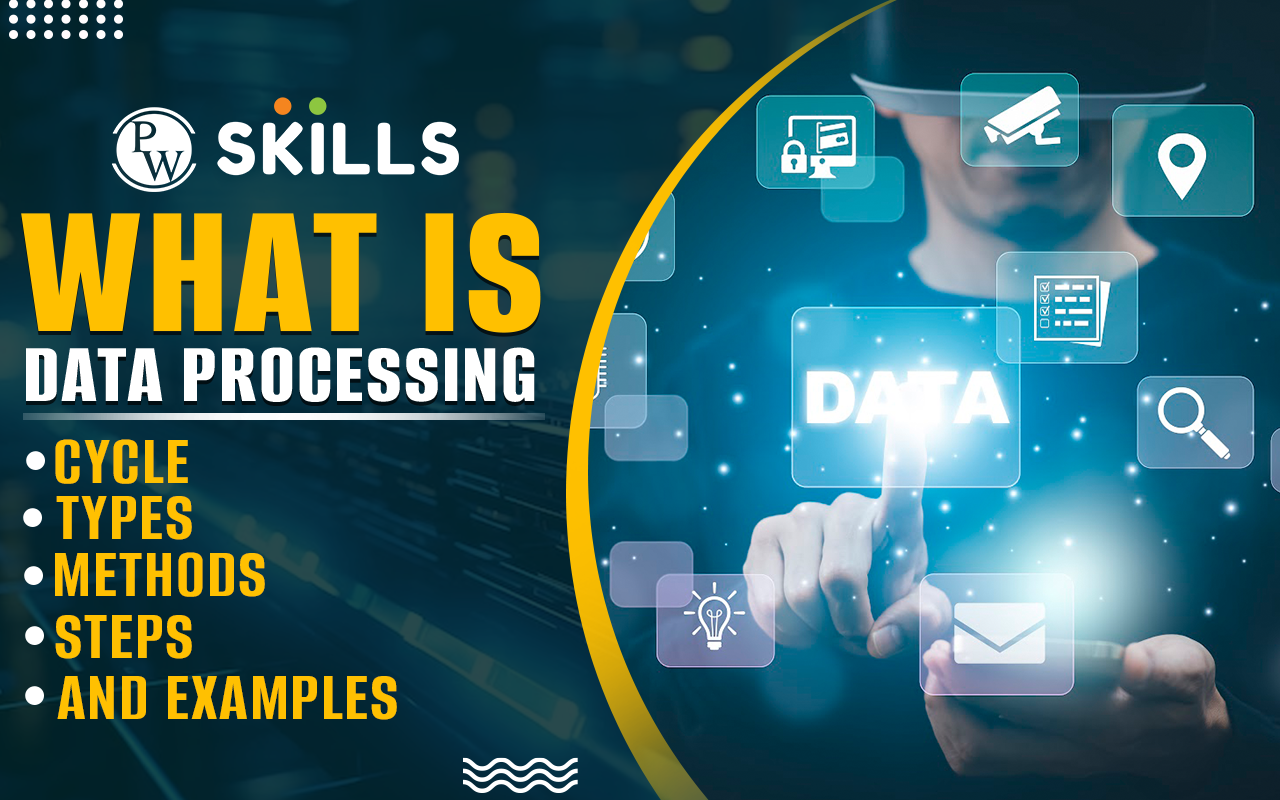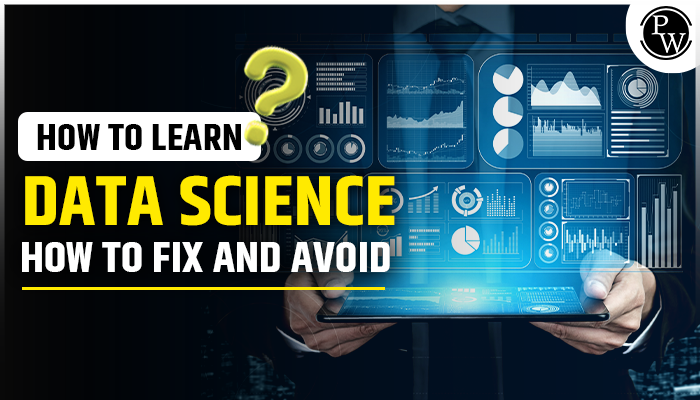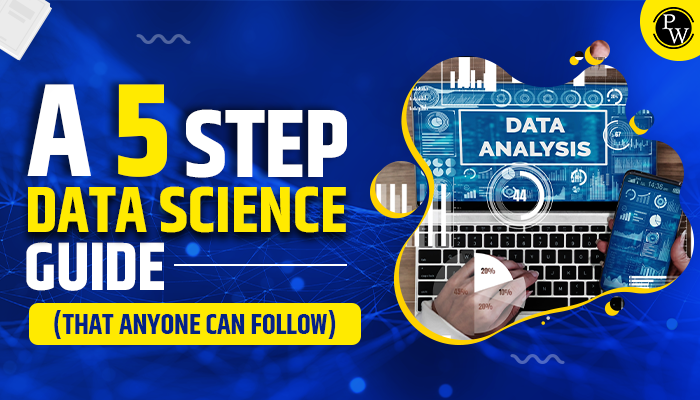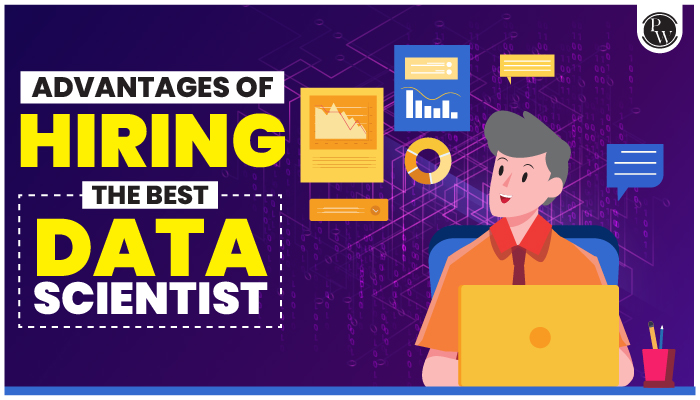In the digital era, data has become a cornerstone of decision-making and problem-solving. As the volume and complexity of data continue to grow, the need for effective data processing becomes paramount. In this blog, we’ll talk about data processing in computers, data processing meaning, types, cycles, and much more!
If you’re tired of dead-end jobs and want to switch careers, then the Decode Data Science with ML 1.0 and become a sought-after data scientist in today’s booming tech industry. Embrace hands-on learning with industry-leading tools, tackle real-world projects, and secure your dream job with our job assurance program. So, enroll now and transform your future!
What Is Data Processing in a Computer?

At its essence, data processing transforms raw data into meaningful information. In the computer realm, this plays a vital role in managing and interpreting the vast daily data influx. It involves diverse tasks like data entry, validation, computation, and analysis. Data processing serves as the foundation for information systems, allowing organisations to extract actionable insights. Through this, businesses can make informed decisions, monitor performance, and secure a competitive advantage. The precision and efficiency of data processing directly affect the quality of information available to decision-makers.
Computer-based data processing relies on various components working cohesively. These include input devices gathering raw data, a processing unit manipulating and analysing it, storage devices holding processed information, and output devices presenting results to users.
Moving From Data Processing to Analytics
From basic record-keeping, data processing has evolved into a sophisticated analytical tool. At first, the focus was on sorting and storing data. With technological progress, data processing advanced, taking on more complex tasks like statistical analysis and predicting trends.
The inclusion of analytics marks a significant change in data processing. Analytics adds interpretation and prediction to raw data, empowering organisations to gain valuable insights. Machine learning algorithms, statistical models, and artificial intelligence play a crucial role, allowing businesses to make more precise data-driven decisions.
By blending analytics into data processing, organisations can move beyond just reporting historical data. They can now engage in predictive and prescriptive analytics, taking a proactive approach to decision-making by identifying patterns and trends that could impact the future. Analytics not only refines decision-making but also contributes to innovation and strategic planning.
Also read: Top 10 Data Analytics Tools for 2024
The Future of Data Processing
Emerging trends in data processing, like edge computing, quantum computing, and increased automation, shape the future. These trends promise quicker processing, enhanced efficiency, and real-time handling of vast datasets.
Blockchain and decentralised processing gain popularity for bolstering security and data integrity. The advent of 5G technology further accelerates data processing capabilities, enabling faster communication between devices and systems. As data processing evolves, it’s essential for businesses to stay abreast of these technological developments to remain competitive.
The changing data processing scene profoundly affects businesses. Those adopting emerging technologies gain a competitive edge, while those falling behind may face challenges. Success in the future business landscape hinges on the ability to adapt and embrace innovative data processing solutions.
Data Processing in Research
Research, whether in academia or industry, relies heavily on data processing for drawing meaningful conclusions. From collecting survey data to analysing experimental results, data processing plays a pivotal role in ensuring the accuracy and reliability of research findings. The integrity of research outcomes often hinges on the precision of data processing methodologies.
Data processing has wide-ranging applications across medicine, social sciences, and environmental studies. In medical research, it’s employed to analyse patient records, conduct clinical trials, and detect patterns in disease outbreaks. Social scientists, too, use data processing to scrutinise survey responses and make inferences about human behaviour.
A prime instance involves machine learning algorithms in genomics research, delving into extensive genomic datasets to pinpoint genetic markers linked to diseases, advancing personalised medicine. Likewise, data processing plays a pivotal role in climate research, processing large datasets to model and predict shifts in weather patterns.
Also read: Data Collection in Data Analytics 2023: Types, Tools, Steps
Data Processing Meaning
Data processing, at its essence, is about transforming raw data into valuable information. Data processing transforms information into a usable format for analysis and decision-making. The goal is to gain insights, enhance processes, and enable informed decision-making.
To navigate the world of data processing, it’s essential to understand key terms and concepts. Data cleansing, transformation, and loading (ETL) are crucial steps in preparing data for processing. Batch processing involves processing data in large volumes at scheduled intervals, while real-time processing occurs instantaneously as data is generated.
The value of data processing lies in its ability to turn data into actionable insights. Whether optimising business operations, improving customer experiences, or advancing scientific research, data processing enhances the utility of raw information. The accuracy and speed of data processing directly impact the relevance and timeliness of the insights derived.
Types of Data Processing
Here are the different types of data processing:
1. Batch Processing
Batch processing manages large data volumes at scheduled intervals, ideal for non-real-time tasks like payroll and monthly financial reporting.
2. Real-time Processing
Real-time processing, also known as online processing, involves the immediate handling of data as it is generated. This approach is crucial for applications where timely responses are essential, such as online transactions or sensor data in manufacturing.
3. Online Processing
Online processing continuously handles data as it becomes available, merging batch and real-time features for efficiency and immediacy. Online processing is common in systems that require frequent updates, such as inventory management.
4. Distributed Processing
Distributed processing involves the use of multiple interconnected processors to handle data processing tasks. This approach improves processing speed and reliability by distributing the workload across multiple devices.
5. Parallel Processing
Parallel processing boosts speed by executing multiple tasks simultaneously, breaking down tasks into smaller sub-tasks.
6. Cloud-based Processing
Cloud-based processing uses remote servers for scalability, cost-effectiveness, and accessibility, avoiding the need for dedicated hardware.
Data Processing Examples
In our daily lives, data processing operates covertly, streamlining diverse processes. E-commerce platforms depend on it to manage inventory, process transactions, and personalise user experiences. Meanwhile, the healthcare sector extensively processes electronic health records to ensure precise patient information and enable efficient healthcare delivery.
Numerous industries benefit significantly from effective data processing. Financial institutions use it for fraud detection, risk management, and customer relationship management. Manufacturing companies utilise data processing for quality control and supply chain optimization. The entertainment industry employs data processing for content recommendation and audience engagement strategies.
One noteworthy case study is Netflix, which employs sophisticated algorithms for content recommendation. By analysing user viewing habits and preferences, Netflix’s data processing systems suggest personalised content, enhancing user satisfaction and retention. Another example is Amazon, which utilises data processing for dynamic pricing, optimising prices based on market demand and competitor pricing strategies.
Also check: Data Visualization in Data Science: Types, Tools, Best Practices
Data Processing Cycle
The data processing cycle is a systematic sequence of operations involved in converting raw data into meaningful information. This cycle plays a fundamental role in various applications, from business operations to scientific research, ensuring that data is transformed, analysed, and made accessible for decision-making.
Stages in the Data Processing Cycle
- Data Collection: In this initial stage, raw data is gathered from diverse sources, which may include sensors, databases, surveys, or manual entry. The accuracy and completeness of data collected at this stage significantly impact the entire processing cycle.
- Data Preparation: Once collected, raw data often requires cleaning and formatting to ensure consistency and eliminate errors. Data preparation involves tasks such as data cleansing, validation, and transformation, making the information suitable for processing.
- Data Input: Prepared data is then input into the processing system. This stage involves the entry of data into a computer or processing environment. Input methods can vary, ranging from manual entry to automated data feeds.
- Data Processing: The heart of the data processing cycle, this stage involves the actual manipulation and analysis of the input data. Processing tasks may include calculations, comparisons, sorting, or any other operations required to derive meaningful insights from the data.
- Data Storage: Processed data is stored for future reference or analysis. The storage phase is crucial for maintaining a record of historical data, enabling organisations to track changes over time and compare current data with past trends.
- Data Output: The processed information is presented in a comprehensible format for users. This could include reports, visualisations, or any other format that facilitates easy interpretation of the insights derived from the data.
- Data Retrieval: Stored data is retrieved as needed for further analysis or decision-making. This stage ensures that valuable insights derived from historical data are accessible, allowing organisations to learn from past experiences.
Importance of Each Stage in Achieving Successful Data Processing
- Data Collection: Accurate and comprehensive data collection sets the foundation for the entire process. Incomplete or inaccurate data at this stage can lead to skewed results and unreliable insights.
- Data Preparation: The quality of data preparation directly influences the accuracy of subsequent analyses. Cleaning and formatting ensure that the processed data is reliable and free from errors.
- Data Input: Efficient data input mechanisms, whether manual or automated, contribute to the overall speed and accuracy of the processing cycle. Streamlining data entry processes minimises the risk of introducing errors.
- Data Processing: The heart of the cycle, data processing is where raw data is transformed into meaningful information. The efficiency of this stage directly impacts the speed at which insights are derived.
- Data Storage: Effective storage is crucial for maintaining a historical record of data. It enables organisations to track changes over time and conduct trend analysis for more informed decision-making.
- Data Output: The presentation of processed information in a clear and understandable format is essential for effective communication. Well-designed outputs facilitate decision-making by providing insights in a digestible form.
- Data Retrieval: The ability to retrieve stored data is vital for ongoing analysis and decision-making. Quick and efficient retrieval ensures that historical data can be leveraged for learning and adapting strategies.
Also read: Data Science vs Data Analytics: Definition, Process, Role and Skills Required
Conclusion
In conclusion, data processing is a multifaceted concept that has evolved from basic record-keeping to a sophisticated analytical tool. The integration of analytics, the future trends shaping data processing, its role in research, and real-world examples showcase its diverse applications. Understanding the data processing cycle and its types is vital for effective decision-making. In a tech-driven world, adopting innovative processing solutions is crucial for competitiveness.
FAQs
How does the integration of analytics impact traditional data processing?
The integration of analytics represents a significant evolution in data processing, moving beyond basic data transformation. Analytics introduces advanced techniques, such as machine learning and artificial intelligence, enhancing the depth of insights derived from processed data.
Can you provide an example of how cloud-based processing is transforming data processing methods?
A good example is the use of cloud platforms like AWS or Azure for large-scale data processing tasks, where organisations can dynamically scale their processing resources based on demand, reducing infrastructure costs and increasing operational flexibility.
How does the data processing cycle contribute to the reliability of research outcomes?
The data processing cycle plays a pivotal role in research by ensuring the accuracy and reliability of outcomes. Through stages like data preparation and processing, researchers can cleanse and analyse raw data, minimising errors and enhancing the quality of results.
What are the key considerations for selecting the right type of data processing for a specific task?
Choosing the right type of data processing depends on the nature of the task and the requirements of the application. Real-time processing is ideal for applications requiring immediate responses, while batch processing suits tasks that don't demand instant results.
How does the data processing cycle adapt to the evolving technological landscape?
The data processing cycle adapts to the evolving technological landscape by incorporating emerging trends. For instance, the use of edge computing and automation technologies is reshaping how data is processed in real-time at the source, enhancing efficiency.





